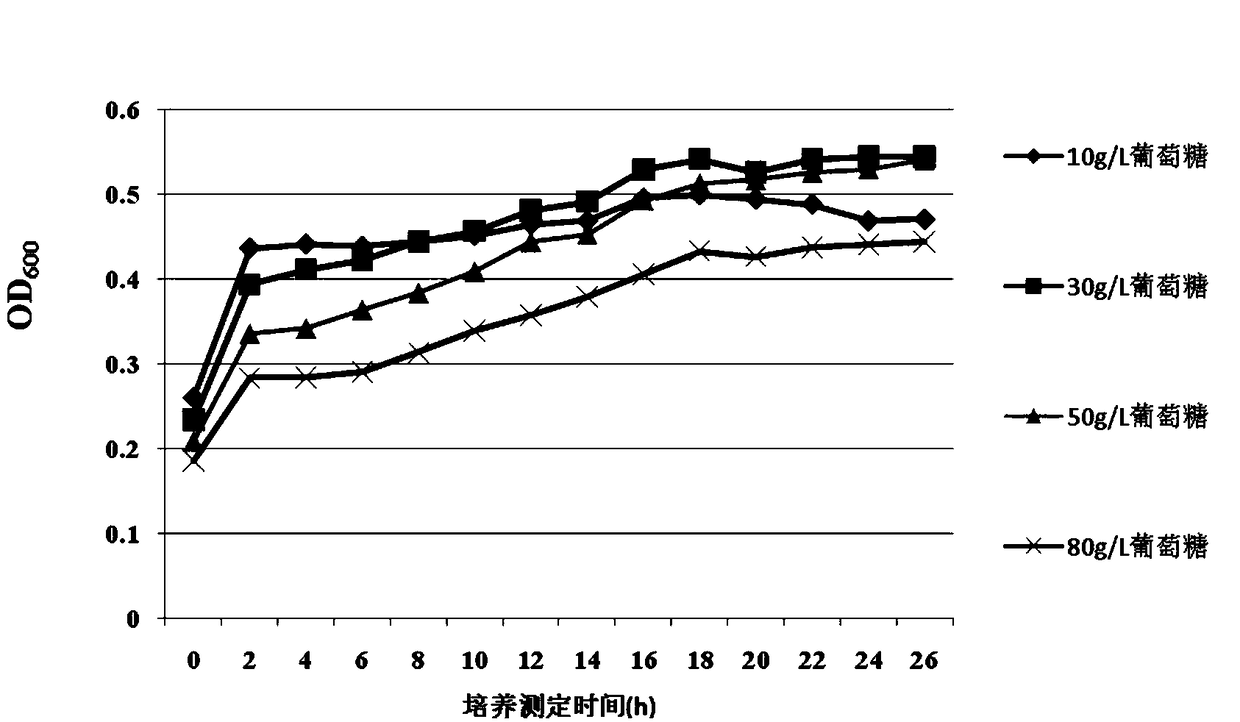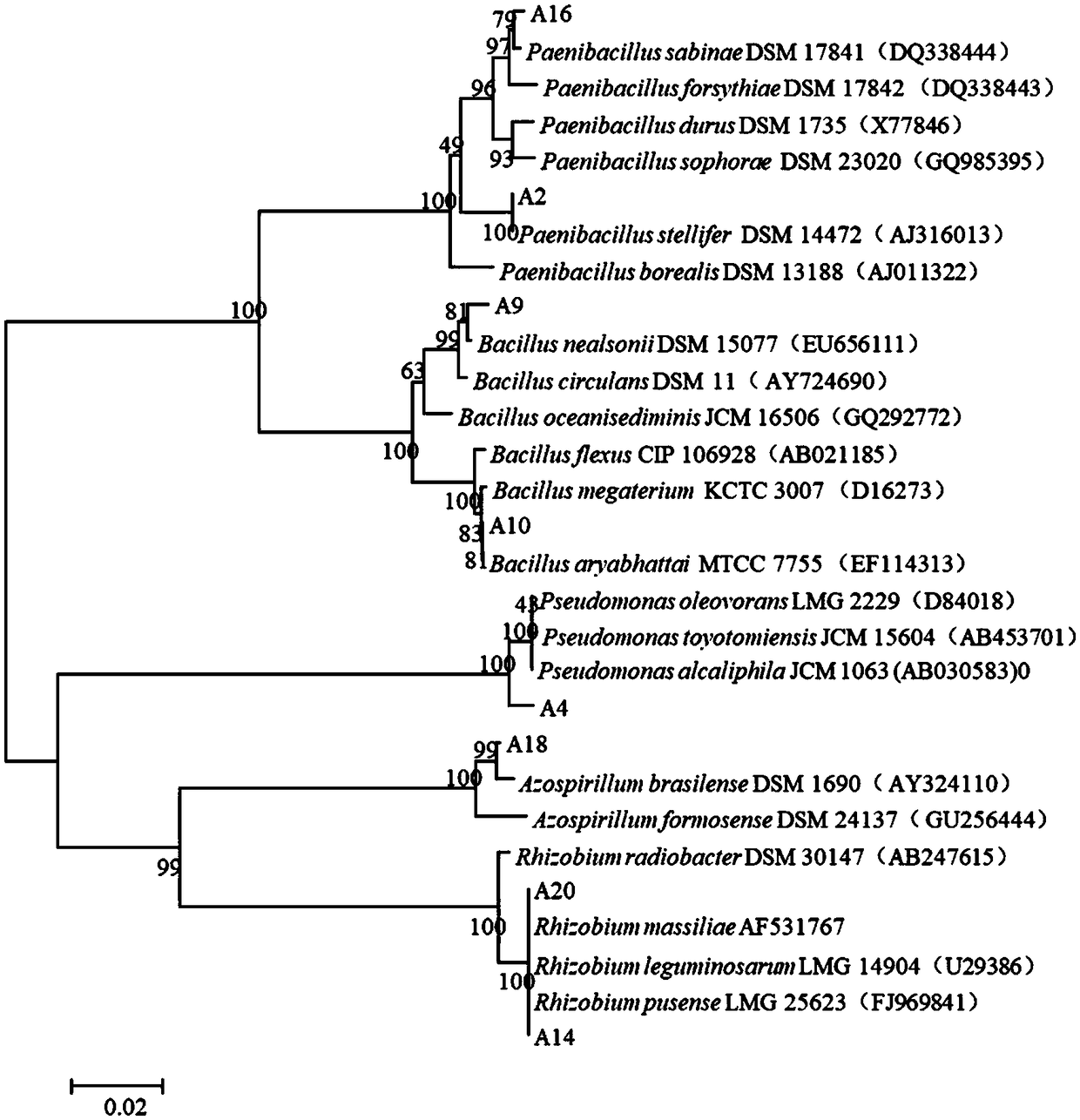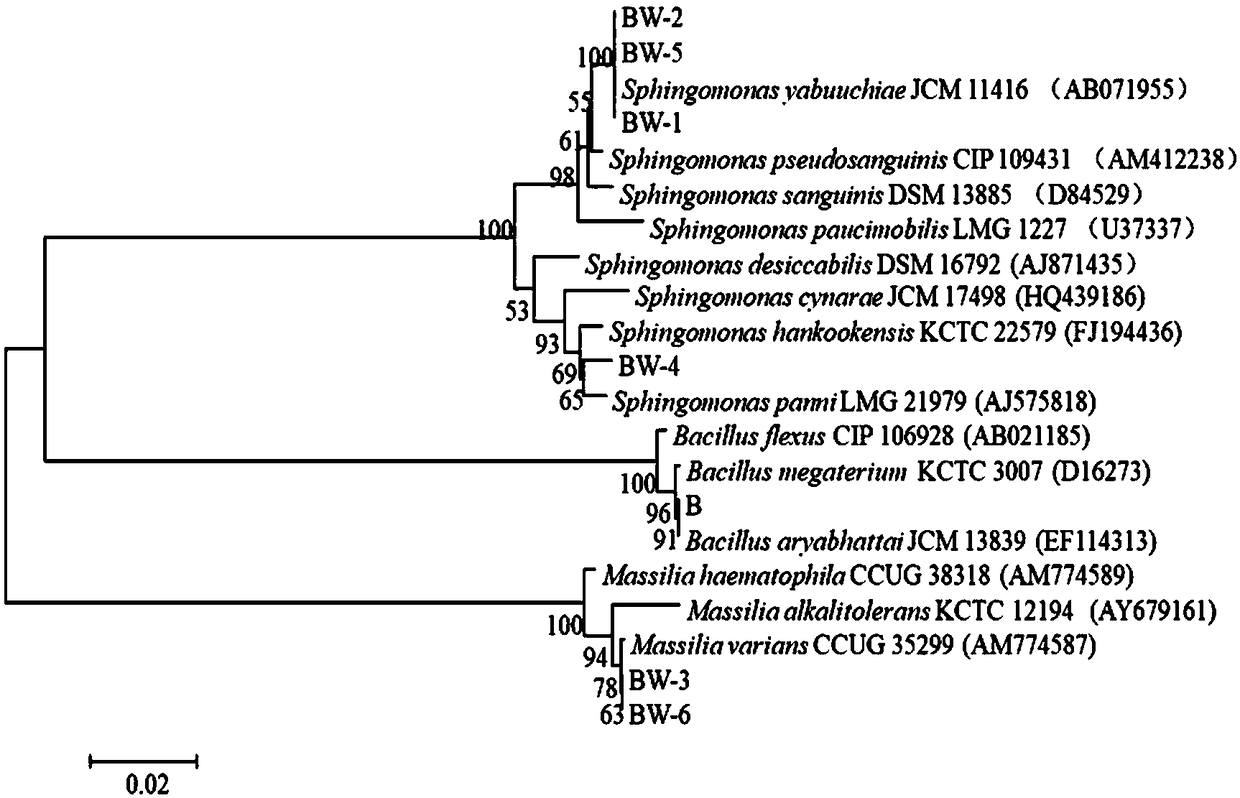Method for separating nitrogen-fixing bacteria from petroleum pollutants
A technology for oil pollution and nitrogen-fixing bacteria, applied in microorganism-based methods, biochemical equipment and methods, separation of microorganisms, etc. performance, improved accuracy and separation efficiency
- Summary
- Abstract
- Description
- Claims
- Application Information
AI Technical Summary
Problems solved by technology
Method used
Image
Examples
Embodiment 1
[0035] The growth situation of embodiment 1 nitrogen-fixing bacteria adding different concentrations of glucose in nitrogen-free medium
[0036] (1) Bacterial culture: Select the bacterial strain Klebsiella sp PJ35 with confirmed nitrogen-fixing ability as the experimental material, use LB medium to cultivate the bacterial strain to the logarithmic phase, and adjust the initial density to OD 600 = 0.2;
[0037] (2) Detection of growth ability: the cultured nitrogen-fixing bacteria were inoculated into nitrogen-free medium containing different glucose concentrations, and the glucose concentrations were respectively: 10g / L, 30g / L, 50g / L, and 80g / L. Measure the OD of the bacteria every two hours 600 value. see results figure 1 .
[0038] It shows that under the concentration of 30g / L and 50g / L glucose, the growth ability of nitrogen-fixing bacteria in the nitrogen-free medium is optimal, and after the concentration of glucose exceeds 80g / L, its growth will be inhibited, while...
Embodiment 2
[0039] Example 2 Isolation of Nitrogen-fixing Bacteria from Soil Contaminated by Explosion of Huangwei Oil Pipeline Explosion in Huangdao District, Qingdao City
[0040] (1) Sample collection: Collect the crude oil contaminated soil from the explosion of Qingdao Huangwei Oil Pipeline for screening of nitrogen-fixing bacteria
[0041] (2) Isolation of nitrogen-fixing bacteria: Weigh 2.5g soil sample and add 10ml sterile water to suspend, vortex shaker for 10min to promote dispersion, stand still for 2-5 minutes, absorb the suspension, dilute to 10 -3 , Melt the nitrogen-free solid medium and keep it warm at 55°C. Take 1ml of each dilution and add it to 25ml nitrogen-free solid medium. After mixing thoroughly, prepare a plate immediately, and repeat each dilution 3 times. After culturing at 30°C for 2-4 days, there will be colonies growing on the surface or inside of the medium, that is, the nitrogen-fixing bacteria in the oil-contaminated soil were isolated, and a single colony...
Embodiment 3
[0049] Example 3 Isolation of nitrogen-fixing bacteria in Xinmin high pouring oil contaminated soil
[0050] (1) Sample collection: oil-contaminated soil was collected from oil fields.
[0051] (2) Isolation of nitrogen-fixing bacteria: Weigh 2.5g soil sample and add 10ml sterile water to suspend, vortex shaker for 10min to promote dispersion, stand still for 2-5 minutes, absorb the suspension, dilute to 10 -3 , Melt the nitrogen-free solid medium and keep it warm at 55°C. Take 1ml of each dilution and add it to 25ml nitrogen-free solid medium. After mixing thoroughly, prepare a plate immediately, and repeat each dilution 3 times. After culturing at 30°C for 2-4 days, there will be colonies growing on the surface or inside of the medium, that is, the nitrogen-fixing bacteria in the oil-contaminated soil were isolated, and a single colony was picked and purified on the GMCY medium, and stored at -80°C.
[0052] (3) Analysis of phylogenetic status of nitrogen-fixing bacteria: a...
PUM
 Login to View More
Login to View More Abstract
Description
Claims
Application Information
 Login to View More
Login to View More - Generate Ideas
- Intellectual Property
- Life Sciences
- Materials
- Tech Scout
- Unparalleled Data Quality
- Higher Quality Content
- 60% Fewer Hallucinations
Browse by: Latest US Patents, China's latest patents, Technical Efficacy Thesaurus, Application Domain, Technology Topic, Popular Technical Reports.
© 2025 PatSnap. All rights reserved.Legal|Privacy policy|Modern Slavery Act Transparency Statement|Sitemap|About US| Contact US: help@patsnap.com



